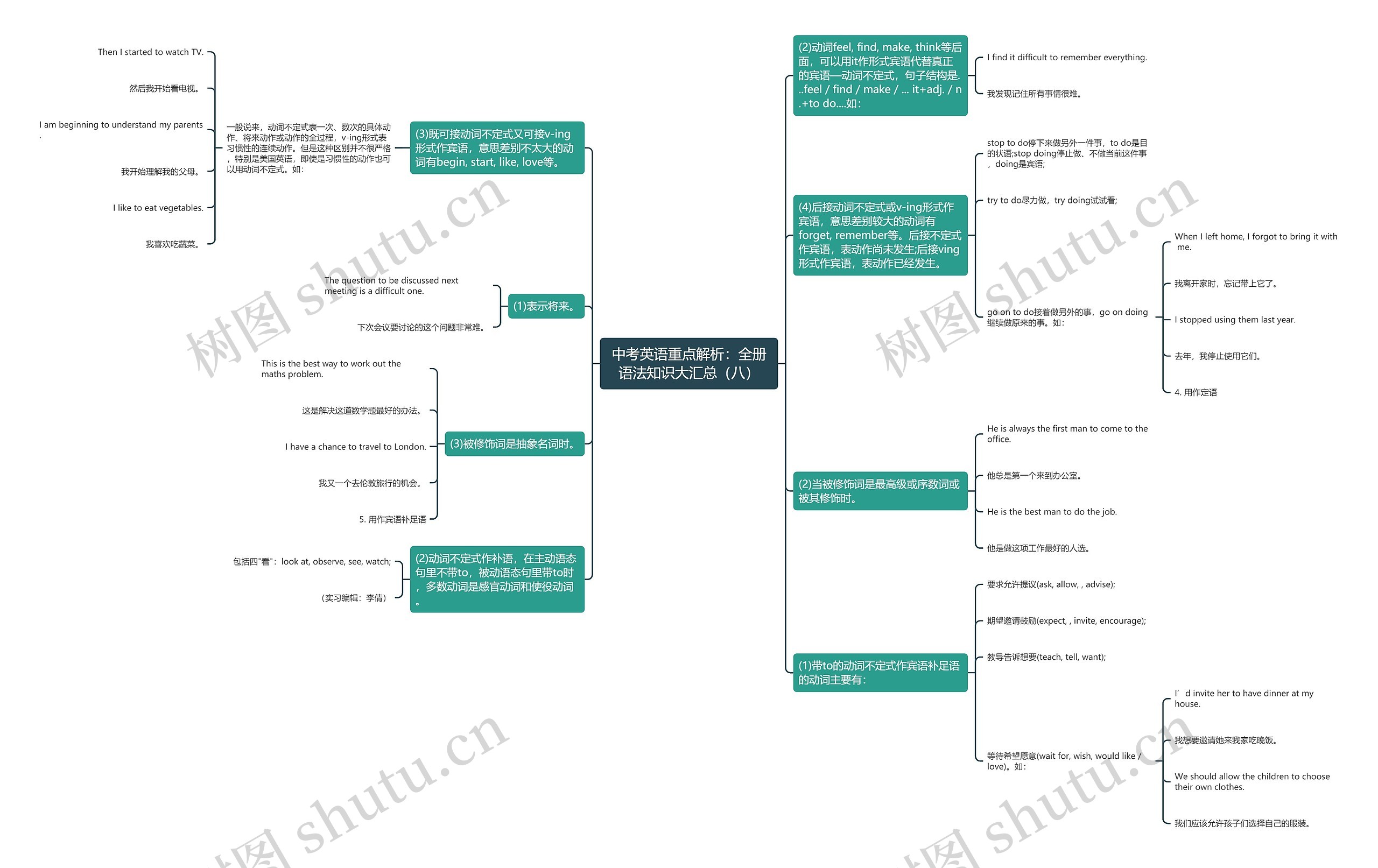(2)动词feel, find, make, think等后面,可以用it作形式宾语代替真正的宾语—动词不定式,句子结构是...feel / find / make / ... it+adj. / n.+to do....如:
I find it difficult to remember everything.
(3)既可接动词不定式又可接v-ing形式作宾语,意思差别不太大的动词有begin, start, like, love等。
一般说来,动词不定式表一次、数次的具体动作、将来动作或动作的全过程,v-ing形式表习惯性的连续动作。但是这种区别并不很严格,特别是美国英语,即使是习惯性的动作也可以用动词不定式。如:
Then I started to watch TV.
I am beginning to understand my parents.
I like to eat vegetables.
(4)后接动词不定式或v-ing形式作宾语,意思差别较大的动词有forget, remember等。后接不定式作宾语,表动作尚未发生;后接ving形式作宾语,表动作已经发生。
stop to do停下来做另外一件事,to do是目的状语;stop doing停止做、不做当前这件事,doing是宾语;
try to do尽力做,try doing试试看;
go on to do接着做另外的事,go on doing继续做原来的事。如:
When I left home, I forgot to bring it with me.
I stopped using them last year.
(1)表示将来。
The question to be discussed next meeting is a difficult one.
(2)当被修饰词是最高级或序数词或被其修饰时。
He is always the first man to come to the office.
He is the best man to do the job.
(3)被修饰词是抽象名词时。
This is the best way to work out the maths problem.
I have a chance to travel to London.
(1)带to的动词不定式作宾语补足语的动词主要有:
要求允许提议(ask, allow, , advise);
期望邀请鼓励(expect, , invite, encourage);
教导告诉想要(teach, tell, want);
等待希望愿意(wait for, wish, would like / love)。如:
I’d invite her to have dinner at my house.
We should allow the children to choose their own clothes.
(2)动词不定式作补语,在主动语态句里不带to,被动语态句里带to时,多数动词是感官动词和使役动词。
包括四"看":look at, observe, see, watch;

